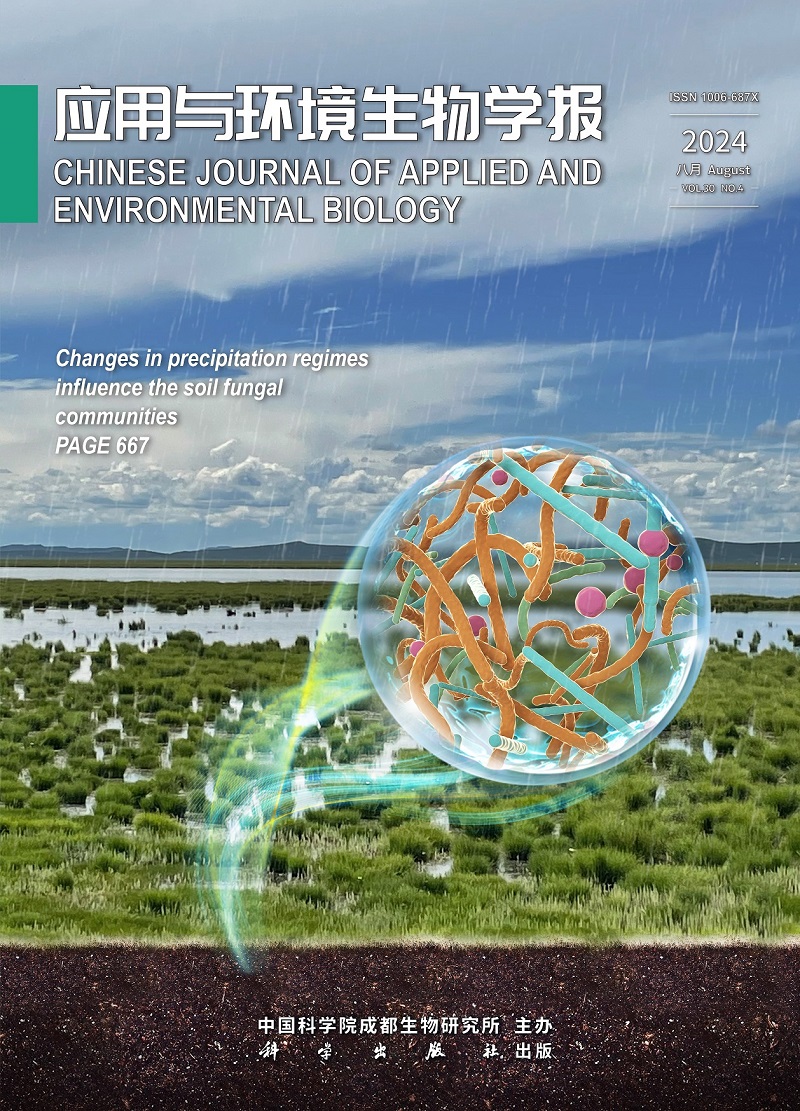青藏高原东北部湖泊细菌群落结构
Q4 Agricultural and Biological Sciences
引用次数: 0
摘要
青藏高原东北部处于中国东部季风区、西北干旱区和青藏高原地区的交汇地带。2012年4 ~ 5月,对青藏高原东北部10个湖泊的细菌群落结构进行了调查。通过16S rRNA测序和PCR-DGGE技术,构建了12个细菌属水平文库,共有117个操作分类单元,包括27个Betaproteobacteria、8个Gamaproteobacteria、21个Alphaproteobacteria、7个Deltaproteobacteria、16个Acidobacteria、2个deinococci、5个Sphingobacteria、6个Flavobacteria、5个Nitrospira、11个放线菌ia、6个gemmatimonadees和3个未分类细菌。在这些被研究的湖泊中,大多数序列比任何其他细菌簇更接近水生细菌。青藏高原东北部运行分类单元数为32.1±11.2,Shannon-Wiener多样性指数为0.97±0.29,Pielou均匀度指数为0.19±0.04,Sorenson相似性指数为0.31±0.11,均较低。环境因子对细菌群落的影响显著,温度与OTUs(R = 0.763, P 0.05)、Shannon-Wiener多样性指数(R = 0.708, P 0.05)、Pielou均匀度指数(R = 0.641, P 0.05)呈正相关;湖泊面积与OTUs(R= 0.754, P 0.05)和Shannon-Wiener多样性指数(R= 0.668, P 0.05)呈正相关。水化学在细菌群落中也起着重要作用。研究结果对该区群落结构和可持续发展的气候因子研究具有一定的指导意义。本文章由计算机程序翻译,如有差异,请以英文原文为准。
Bacterial Community Structure in Lakes on the Northeastern Qinghai-Tibetan Plateau
The northeast of Qinghai-Tibetan Plateau is located in the convergence zone of the monsoon region of eastern China, northwest arid area and Qinghai-Tibetan Plateau region. During April to May 2012, an investigation was carried out on the bacterial community structure in ten lakes on northeastern Qinghai-Tibetan Plateau. With 16S rRNA sequencing and PCR-DGGE technology, twelve bacteria genus level libraries were constructed with a total of 117 operational taxonomic unit including 27 Betaproteobacteria, 8 Gamaproteobacteria, 21 Alphaproteobacteria, 7 Deltaproteobacteria,16 Acidobacteria, 2Deinococci, 5 Sphingobacteria, 6 Flavobacteria, 5 Nitrospira, 11 Actinobacteria, 6 Gemmatimonadetes and 3 unclassified bacteria. Most sequences in these studied lakes were closer to aquatic bacteria than any other bacterial clusters. The number of operational taxonomic unit in northeastern Qinghai-Tibetan Plateau was 32.1 ± 11.2, Shannon-Wiener diversity index 0.97± 0.29, Pielou's evenness index 0.19 ± 0.04, and Sorenson similarity index between lakes 0.31 ± 0.11, all comparatively low.Notably, the environment factors played an important role in bacteria community, with temperature positively related to OTUs(R = 0.763, P 0.05), to Shannon-Wiener diversity index(R = 0.708, P 0.05), and to Pielou's evenness index(R = 0.641, P 0.05); the lake area was also positively related to OTUs(R= 0.754, P 0.05) and Shannon-Wiener diversity index(R = 0.668, P 0.05). Water chemistry also played an important part in bacteria community. The result is helpful for study of climatic factors of community structure and sustainable development in this region.
求助全文
通过发布文献求助,成功后即可免费获取论文全文。
去求助
来源期刊

应用与环境生物学报
Agricultural and Biological Sciences-Agronomy and Crop Science
CiteScore
1.20
自引率
0.00%
发文量
4458
期刊介绍:
The “Chinese Journal of Applied and Environmental Biology” is a national scientific and technological journal published both at home and abroad. It was started in 1995 and became bimonthly in 1999, and now it is a core journal for applied and environmental biology in China. It aims to introduce and exchange the new achievements, new technologies, new methods and new progresses made from the research fields of biology and its related disciplines both in China and abroad; enhance scientific and technological research serving for the development and construction of national economy, and improvement of people’s living standards.
 求助内容:
求助内容: 应助结果提醒方式:
应助结果提醒方式:


